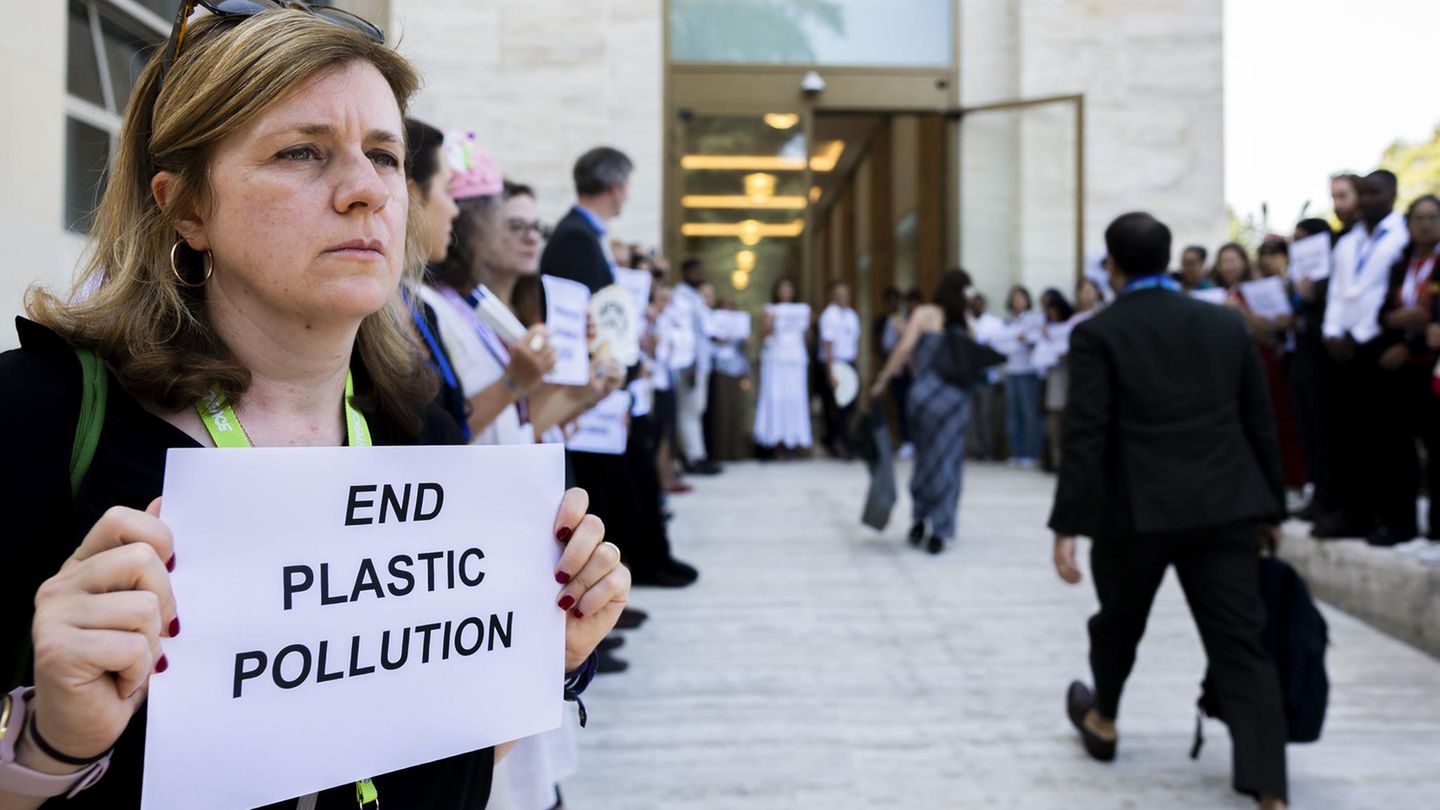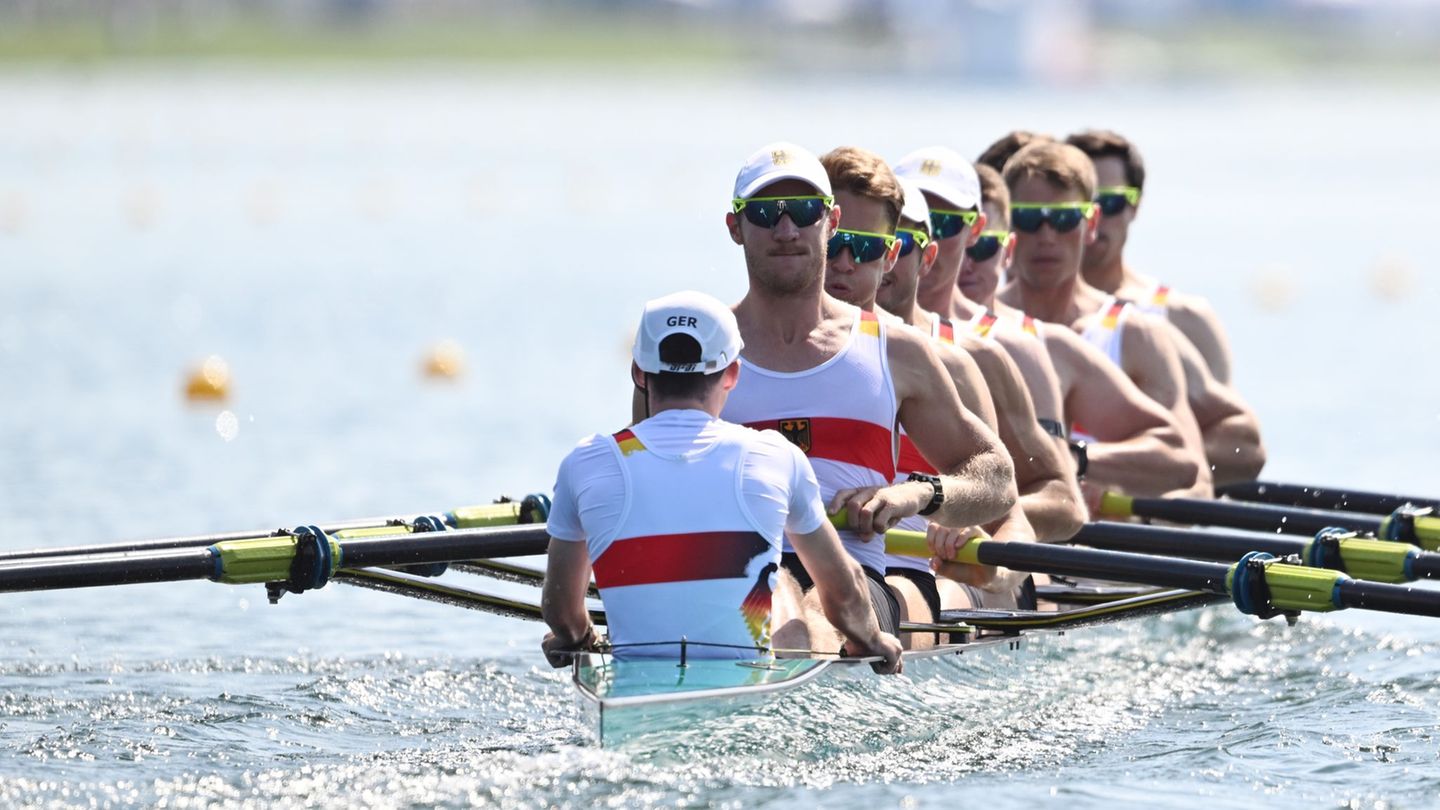Environmental protection
Negotiations on the Agreement against plastic waste failed
Copy the current link
Add to the memorial list
Plastic is a big problem for the planet and people. It should be solved in Geneva. But the community of states was disagreed until the end, how.
The agreement on a global agreement against plastic waste has failed for the time being. After three years of negotiations in the final week in Geneva, around 180 countries could not agree on a contract text, as several delegations said after nightly consultations at the final plenary session on early Friday morning. It remained unclear how things will continue.
Already on Wednesday it was clear that the positions of the countries were as far apart as ever. A draft contract from which practically all binding obligations were deleted was rejected by dozens of countries. Even a new draft from Friday morning was not unanimously approved, as the conference chair said.
“In this case, no agreement is better than one that cements the status quo at the UN level instead of being a real solution to the plastic crisis,” said Florian Tize from the WWF environmental foundation.
The irreconcilable positions
On the one hand, there are more than 100 countries with particularly ambitious goals (High Ambition Coalition), which require a limitation of production to a sustainable level. This includes Germany, the EU and dozens of countries in South America, Africa and Asia. They also want to pull disposable plastic such as cups or cutlery, promote plastic products for multiple use and a circular economy in which the raw materials of a product are prepared and used again.
On the other hand, there are above all the countries that have the raw material for the plastic: oil. Among them are Saudi Arabia, Iran and Russia. They call themselves the group of like-minded people (Like-Minded Group). These countries want to largely limit themselves to better waste management.
The order that the UN countries had given themselves in 2022 was actually clear: the mandate states that the legally binding contract should include the entire life cycle of the plastic, from production to design to disposal.
How plastic ecosystems and people harm
Plastic flashes and the environment and poisoned ecosystems, kills fish and other living things and endangers human health. The smallest particles are increasingly found in organs and also in the brain. According to studies, the nano and microplasty particles affect the immune system, among other things, can settle in arteries and promote inflammation.

Morgenstern – the newsletter at the start of the day
From Donald Trump to Heidi Klum: We’ll tell you what you really need to know in the morning – compact, well -founded, entertaining. Our briefing ends up in your mailbox from Monday to Friday at 6.30 a.m.
There are numerous numbers for pollution. The following come from the German Ministry of the Environment: From the 1970s to 2020, plastic production has sifted to 367 tons a year and could reach almost 600 million tons a year without measures. A large part therefore make up disposable products, including packaging. A total of 8.3 billion tons of plastic have been produced so far and have become 6.3 billion tons of waste, which largely landed on landfills. According to estimates, 152 million tons of plastic waste have accumulated in rivers and oceans.
Note: This article has been updated and further information was added.
Dpa
RW
Source: Stern
I have been working in the news industry for over 6 years, first as a reporter and now as an editor. I have covered politics extensively, and my work has appeared in major newspapers and online news outlets around the world. In addition to my writing, I also contribute regularly to 24 Hours World.




